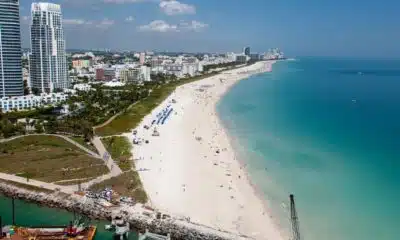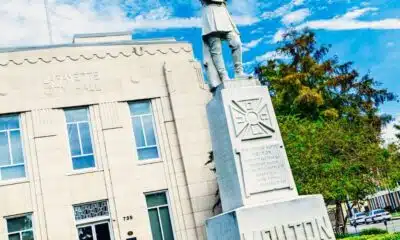(The Center Square) – Hope remains 125 years after the Great Storm of 1900 decimated Galveston Island.
On Sept. 8, 1900, a massive hurricane tore through Galveston, creating an estimated $30 million worth of damages at the time.
The last wind speed measured 100 miles an hour before instruments were blown away. The tide reached roughly 16 feet above sea level; the barometric pressure at 7:30 PM “was the lowest ever recorded in the United States to that day,” according to accounts in a Rosenberg Library exhibit in Galveston.
An estimated more than 8,000 people were killed in Galveston and north on the mainland, although total deaths are unknown and believed to be much higher. At least 8,000 were left homeless; nearly all buildings and churches were destroyed. Bridges, train tracks, utilities and telegraph lines were wiped out. Ocean steamers were stranded; boats were destroyed. No fresh water and a limited food supply created a desperate situation for survivors.
Corpses were strewn on land and floating in the Gulf. Dead animals, rotting vegetation and fragments of houses were piled stories deep, stretching across the east end of the island.
“There is hardly a family on the island whose household has not lost a member or more, and in some instances entire families have been washed away or killed. Hundreds who escaped from the waves did so only to become the victims of a worse death, being crushed by falling buildings,” one account describes in “Galveston in Nineteen Hundred,” published in 1900 and edited by Clarence Ousley of the Galveston Tribune.
After extensive looting and price gouging ensued among the living, the mayor declared martial law, enforced by the military and local police. All able-bodied men were required to collect the corpses to bury. The volume was so great there wasn’t enough land, men, horses and carts to bury them. Attempts to bury corpses at sea resulted in them washing back ashore. The only solution left was to burn bodies, which lasted for months. Identification of the dead was impossible, according to multiple accounts.
“Bonfires are burning all over the city. They are the funeral of a thousand festering corpses cast back upon the shore at high tide,” another account from Galveston in Nineteen Hundred reads. “Cremation has become a necessity to prevent an epidemic. The townspeople are paralyzed with fright and suffering, or are making preparations to leave the doomed island.”
After appeals were made by the governor and Clara Barton, founder of the Red Cross, relief money, supplies, volunteers and messages of hope poured in from across the country.
“In the wake of the disaster of 1900, the determined majority of the survivors stayed on Galveston Island and turned their eyes to the future,” the library states. They were led by a group of businessmen resolved to rebuild. Among them was W. L. Moody, Sr., who said, “Galveston will be rebuilt stronger and better than ever before.”
Within a few years, part of the east end of the island was raised and a seawall was built. The island survived a massive hurricane in 1915 and every subsequent hurricane. In 125 years, the island’s population increased roughly 35%; more than 8 million visit a year.
Among the many commemorative events on Sept. 8, was the unveiling of the Bryan Museum’s first grand scale outdoor painting, “The Emotional Trinity: Hope, Fear and Awe,” painted by Vickie McMillan-Hayes. It’s available to view for free.
“In the world’s great tragedies that of Galveston stands remarkable. In no other case in history has a disaster met with such courage and fortitude; in no other case in history were the people of the whole world so responsive to the call for help for the helpless,” the museum states.
Its founder, J.P. Bryan, another instrumental leader in Texas and descendent of Stephen F. Austin’s sister, encouraged the public at the unveiling, “in all things great or small, never give in. … Hope abides abundantly regardless of the tragedy and the magnitude of it that you might face like we faced here in Galveston. God’s amazing grace is available for all of us who seek it, and it abides abundantly in our lives.”
Native Texan and wildlife conservation artist Vickie McMillan-Hayes painted “The Emotional Trinity: Hope, Fear and Awe,” in commemoration of the 125 year anniversary of the Great Storm, which killed more than 8,000 people in Galveston on Sept. 8, 1900. It remains the greatest natural disaster in U.S. history. The painting is permanently displayed at the Bryan Museum in Galveston and is free to the public to view.
The painting depicts a woman holding her baby, with her son clinging to her legs, looking at sunlight with the ruins of Galveston below. The baby represents awe; the boy, fear and comfort. The mother “isn’t looking down at destruction but is gazing at hope,” Hayes said. “She has fixed her eyes upon something beautiful. She is looking to the future, renewal, rebirth. She had a choice to look down at the devastation and distraction or to lift her gaze up … in hope.
“This is a question we can all ask ourselves when faced with difficult circumstances, what are my eyes fixed on? Does it lead me on a path of peace and hope for myself? It is the Lord Jesus Christ who gives me great hope,” she said. “It is fixing my eyes on him and him alone.”
The painting was collaborative, with members of the public brushing strokes. “We all came together and added our stroke of paint to this piece, and we were a community at large coming together, making a statement of resilience and hope faced with tragedy,” she said.
The Storm of 1900 remains the deadliest natural disaster in U.S. history.











































